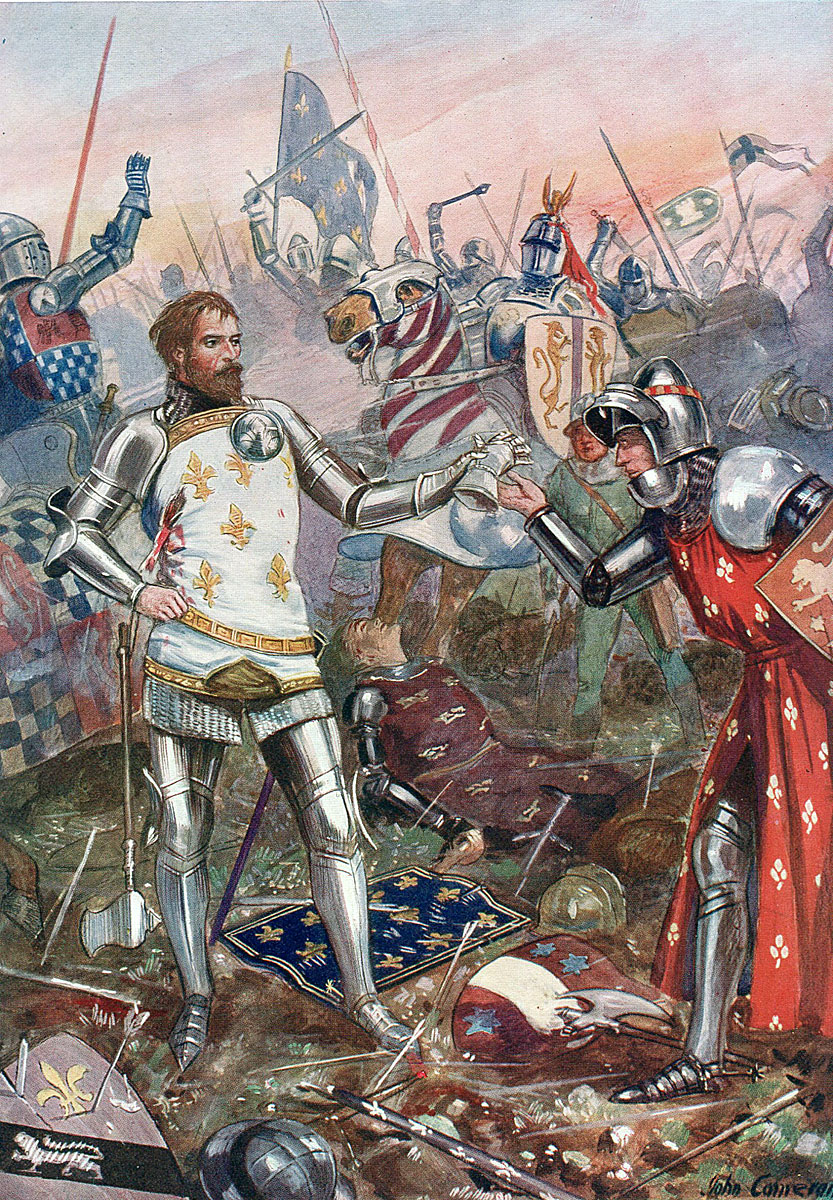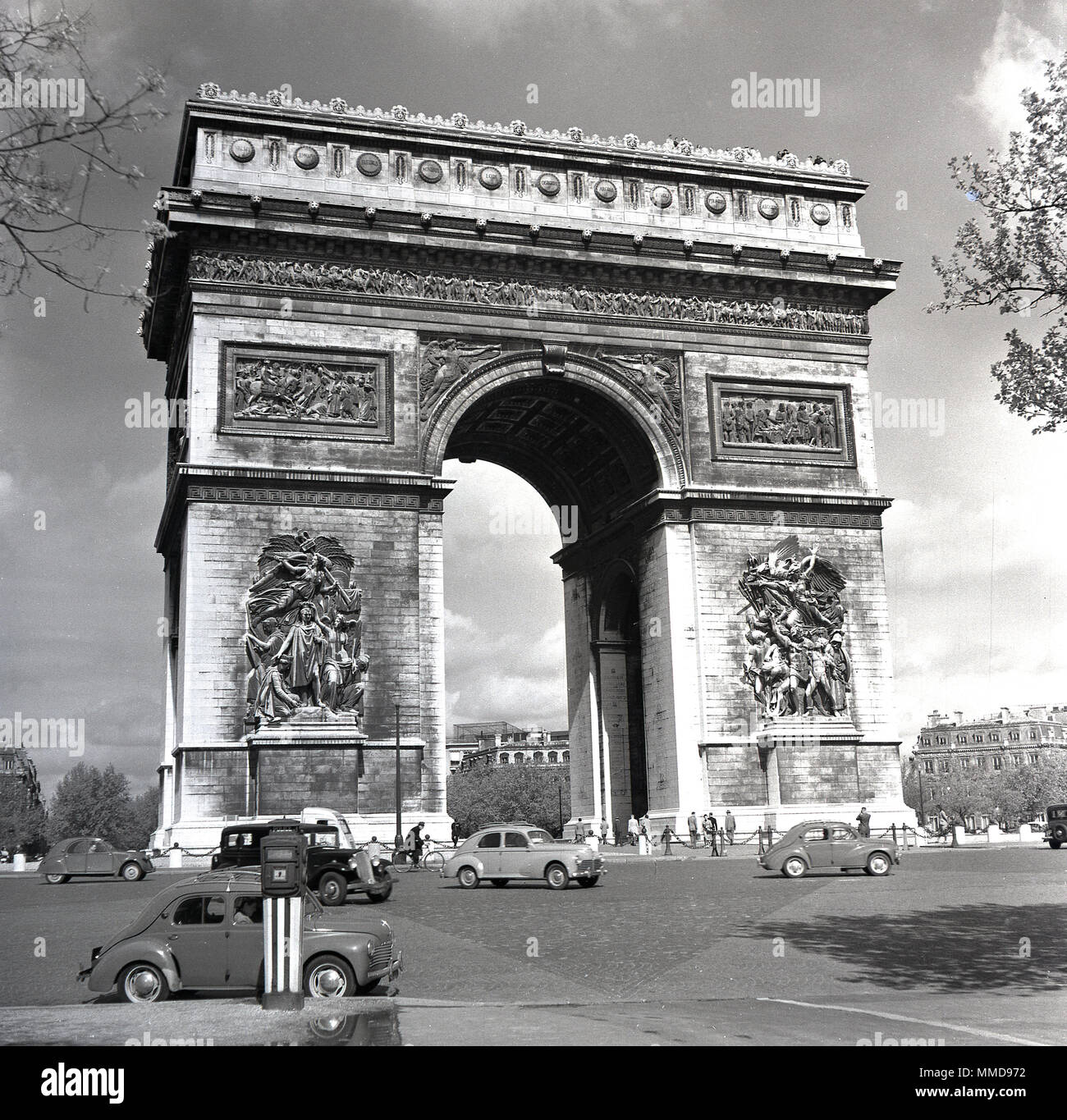French Military Victorie - Also known as the Seven Years' War, this new world conflict marked another chapter in the long imperial struggle between Britain and France. When French expansion into the Ohio River Valley repeatedly conflicted with British colonial claims, several battles led to a British official declaration of war in 1756. The British turned the tide with the financial support of future Prime Minister William Pitt. with victories at Louisbourg, Fort Frontenac, and the French Canadian forts of Quebec. At the peace treaty of 1763, the British extended the Mississippi Valley westward by receiving the Canadian territories from France and Florida from Spain.
The Seven Years' War (called the French and Indian War in the colonies) lasted from 1756 to 1763, creating a chapter in the imperial struggle between Great Britain and France called the Second Hundred Years' War.
French Military Victorie

In the early 1850s, French expansion into the Ohio River Valley brought it into frequent conflict with claims to British colonies, particularly Virginia. In 1854, the French built Fort Duquesne, where the Allegheny and Monongella rivers joined to form the Ohio River (at present-day Pittsburgh), which the British repeatedly attacked.
Franco Prussian War
In 1754 and 1755, the French won several victories, quickly defeating George Washington, General Edward Braddock, and Bradford's successor, Governor William Shirley of Massachusetts.
In 1755 Governor Shirley, fearing that the French settlers of Nova Scotia (Acadia) would join France in any military conflict, sent hundreds of them to other British colonies; Many of the exiles suffered brutally. During this period, British military efforts were hampered by a lack of interest in the country, rivalry between the American colonies, and greater French success in gaining Indian support.
In 1856, the British formally declared war (marking the official start of the Seven Years' War), but their new commander in America, Lord Loudoun, faced the same problems as his predecessor and had little success against the French and their Indian allies.
The tide turned in 1757 as the new British leader, William Pitt, saw the colonial conflict as the key to building a vast British Empire. He borrowed money to finance the war and gave Prussia money to fight in Europe and returned the colonies to raise troops in North America.
Timeline Of French & Indian War At The Fort In Lake George Ny & The Adirondacks
In July 1758, the British won their first major victory at Louisbourg, near St. Louis. Lawrence A month later, they took Fort Frontenac at the west end of the river
In November 1758, General John Forbes captured Fort Duquesne for the British after the French had destroyed it and abandoned it, and Fort Pitt, named after William Pitt, provided the British with a major stronghold at the site.
The British then advanced to Quebec, where General James Wolfe won a stunning victory at the Battle of Quebec on the Plains of Abraham in September 1759 (although he and the French commander Marquis de Montcalm were killed).

With the fall of Montreal in September 1760, the French lost their last hold on Canada Spain soon joined France against England, and for the remainder of the war Britain focused on occupying French and Spanish territories elsewhere in the world.
Napoleon's Defeat In Egypt Gave Birth To Egyptology
The French and Indian War ended with the signing of the Treaty of Paris in February 1763. The British received Canada from France and Florida from Spain, but allowed France to keep the West Indian sugar islands and gave Louisiana to Spain. This system significantly strengthened the American colonies by eliminating European rivals to the north and south and expanding westward up the Mississippi Valley.
The British Crown doubled the British national debt to finance the war from British and Dutch bankers. King George II argued that since the French and Indian Wars benefited the colonists by securing their borders, they should help pay off the war debts.
King George II decided to station permanent British army units in Central America to protect his newly conquered territories from future attacks, which required an additional source of revenue.
In 1765, Parliament passed the Stamp Act to help pay off war debts and finance the British military presence in America. It was the first internal tax imposed on American colonists by Parliament and was met with strong resistance.
Franco German War
This was followed by the popular Townsend Act and the Tea Act, which further angered the colonists who believed that there should be no taxation without representation. Britain's militaristic response to colonial unrest would eventually lead to the American Revolution
Fifteen years after the Treaty of Paris, French tension over losing most of their colonial empire contributed to their intervention on the side of the colonists in the Revolutionary War.
Invoice Verification: We strive for accuracy and fairness But if you see something that doesn't look right, click here to contact us! It regularly reviews and updates its content to ensure it is complete and accurate

For more than 250 years, as Europeans tried to control newly settled American lands, wars broke out between Native Americans and frontiersmen who had access to their lands, resources, and trade. Known as the American Indian Wars, these conflicts involved indigenous, ... read more
Celebrating The Forgotten Military Heroes
The Indian Wars began when English settlers arrived in Jamestown, Virginia, in 1607, when they began an uneasy relationship with the Native Americans (or Indians) who had thrived in the land for thousands of years. At that time, millions of tribals ... read more
At the end of the French and Indian War, the British issued the Proclamation of 1763, asking them to appease the Native Americans by checking the invasion of European settlers on their land. This created a boundary, known as the Declaration Line, that separated British colonies from ... read more.
In the Indian reservation system, tracts of land called reservations were established for Native Americans as white settlers claimed their land. The main goal of Indian reservations was to bring Native Americans under the control of the United States government, to minimize conflict between ... read more.
The American Indian Movement (AIM) is a grassroots indigenous rights movement founded in 1968 in Minneapolis, Minnesota. Originally formed as an urban-focused movement in response to police brutality and racial profiling, AIM rapidly became the engine of the 1970s... read more
Ask Mehmet: Victory Day & Annual Military Promotions > Incirlik Air Base > Article Display
This vast region was inhabited by Native Americans long before Christopher Columbus set foot in what became known as America. During the 16th and 17th centuries, as more and more explorers tried to colonize their land, Native Americans responded with various ... read more
1. George Washington struck the first blow of the war. In 1753, Virginia Governor Robert Dinwiddie sent 21-year-old George Washington to southwestern Pennsylvania with written orders for French forces to leave the disputed territory of the Ohio Valley. When the French refused, ... read more
When naturalists like John Muir first entered California's Yosemite Valley in the 19th century, they marveled at the beauty of what they believed to be a wilderness untouched by human hands. The truth is that the rich diversity and stunning scenery of the places... read more

On September 13, 1759, during the Seven Years' War—a global conflict known in America as the French and Indian War—British troops under General James Wolfe scaled the hills leading to Quebec City. Their risky gambit paid off when... read "War" and "France" in more breaths, and tend to scoff at it.
French Army In World War I
Many will be aware of the somewhat derogatory term for French 'surrender' - but this is only because of the legacy of a controversial moment in French history during World War II, when France fell under Nazi occupation under the Vichy regime, which cooperated. With Germany?
For some, the rapid fall of Hitler's France in 1940 suggests that the country is not a strong military power and does not have a great history of military success.
This response tends to ignore France's hundreds of years of victories and gains in war, not to mention the enthusiasm for going to war in the Revolution, as highlighted each year by Bastille Day or the Fête de la Fédération. France on July 14 every year
Even a cursory glance at the long list of battles France has been involved in reveals a large number of military victories.
Venizelos In The Greek And The International Political Scene
Furthermore, the truth about the fall of France in 1940 is more complex than the cool and lackluster military defense stereotypes would have us believe. It is impossible to appreciate the desire for "peace in our time" (as our own Prime Minister Neville Chamberlain put it) in the years before the Second World War. Britain lost almost a million lives. In World War I, from a population base of about 45 million France lost about 1.3 million soldiers out of a population of 40 million
The Germans enjoyed some luck during their invasion of France in 1940, however
Post A Comment:
0 comments so far,add yours